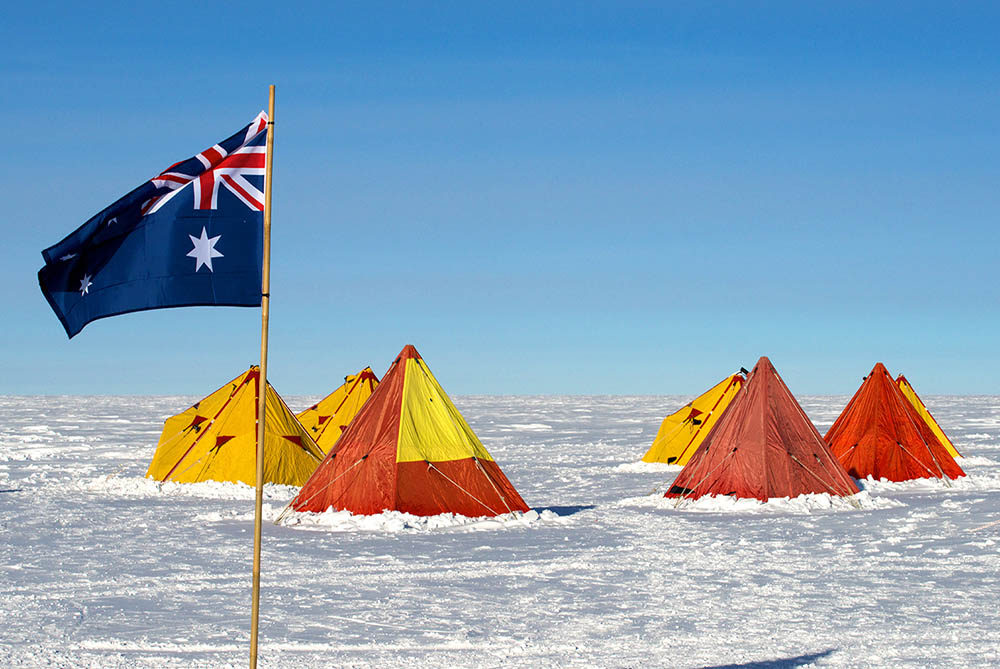OPINION
A 20-year plan welcomed for Australia in the Antarctic

The Antarctic is a vast and inhospitable place with a time scale all of its own. For the scientists who travel there to carry out research, a project can sometimes take years to plan and even longer to conduct.
So the release today of a 20-year strategic plan for Australia’s Antarctic program – and the enthusiastic response to it by the Federal Government – is very welcome.
The plan, authored by Professor Tony Press, emphasises the value of Australia’s research effort to the Australian community and the importance of conducting world-leading research to provide stewardship and protection of the Antarctic environment.
It envisions a world-leading science program underpinned by reliable, well-funded, end-to-end logistics and transport infrastructure.
Most of the high-priority research identified in the plan is not in fact done at Australia’s permanent Antarctic stations, but on icebreaking research vessels and in the deep field.
So while the Antarctic stations are key parts of our infrastructure requirements, the key to successful Antarctic research lies in the ability to reach the deepest depths of the oceans or the remotest parts of inland Antarctica where the oldest ice can be sampled.
Funds have been tight for previous research
In recent years Australia’s ability to access these areas has been compromised. Successive years of budget cuts to the Australian Antarctic Division (AAD) have squeezed the science program because the fixed costs of running the Antarctic stations, ships and air link have taken up a larger slice of the budget, leaving less money for science.
This means the Antarctic program is currently able to undertake fewer than 10 days a year of marine science to conduct vital research.
This in no way detracts from the efforts of the AAD and its staff – rather it is a reflection of their present-day operating environment.
So the decision by the Federal Government to replace the ageing Aurora Australis is very welcome, but as with Australia’s new national research vessel, the RV Investigator, funds to operate it are essential.
As things stand there only operating funds for the RV Investigator for 180 days at sea per year – not the 300 days it is designed for.
It makes no sense for Australia’s world-class research vessels to be tied up at a wharf in Hobart when they should be at sea in support of Australia’s marine research effort.
Australia’s long reach
Australia has the third-largest marine estate of any country in the world and a responsibility to understand and manage it appropriately. Of course, there are also many good news stories to be told.
The Antarctic Climate and Ecosystems Cooperative Research Centre, which I lead, was refunded for A$25 million over five years. An additional A$24 million of funding for developing Hobart as an “Antarctic Gateway” have been very welcome.
The 20-year strategic plan is another bright light on our horizon, providing a set of clear recommendations on how to coordinate funding for Australia’s Antarctic research effort to enable long-term, strategic science planning.
The flow-on benefits from a long-term approach to Antarctic science are potentially enormous. The Antarctic and marine research sector is a major driver in the Tasmanian economy, and the report’s ambitious plan to grow Tasmania as a “gateway” to Antarctica is very welcome.
Presently, the sector contributes about A$200 million annually to Tasmania’s Gross State Product, a number which is multiplied several times over when the flow-on effects to local and national businesses are taken into account.
The presence of Australia’s Antarctic program in Hobart supports a diversified, knowledge-based economy, including manufacturing, construction, electronics and information technology, shipping and aviation services, conference hosting, catering and accommodation to name just a few.
These economic benefits are underpinned by the presence of a vibrant, world-class research community that has been built up over the past three decades.
A 20-year vision and a commitment from government to fund critical infrastructure and research programs are exactly what is needed to ensure Australia remains at the leading edge of Antarctic science and innovation.






















